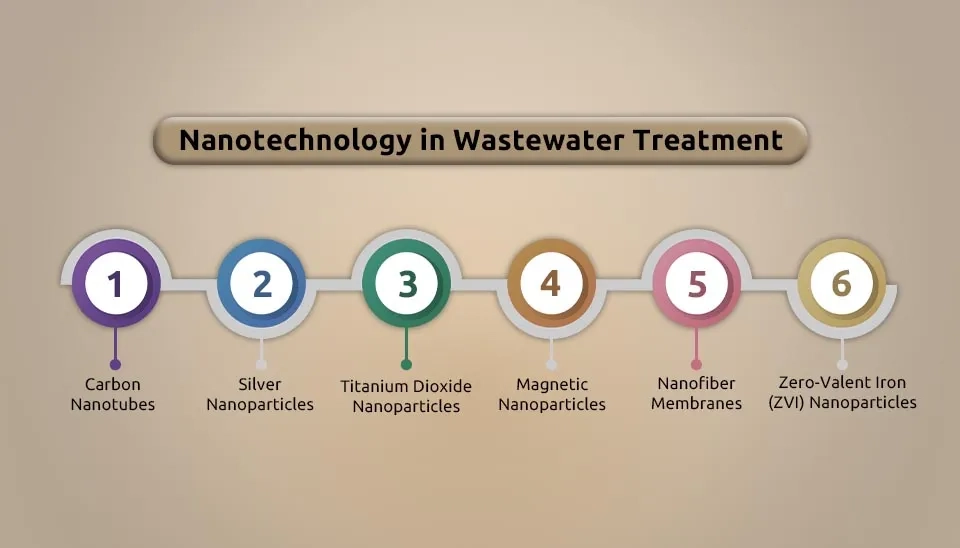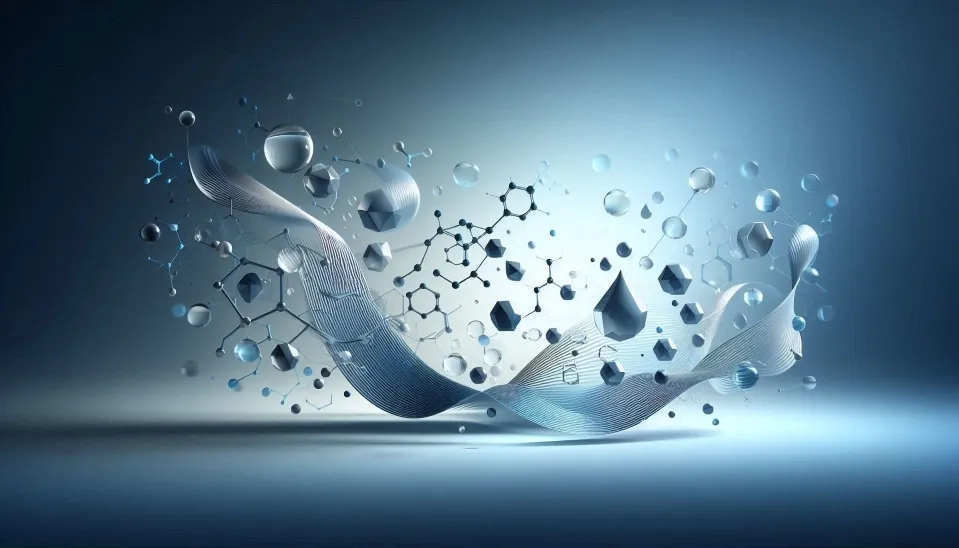
The research framework program in the European Union has provided US$92 million for water innovations and US$686 million for nanotechnology in order to combine nanotechnology and water treatment (Gehrke et al., 2015; Horizen, 2020). This emphasized the importance of utilizing nanotechnology in water and wastewater treatment applications. Everyone needs access to safe water, which requires the utilization of new, cheaper, and more efficient technologies for water purification while considering energy requirements and environmental impacts. Innovative technologies, such as nanotechnology, can improve treatment effectiveness, expand access to safe water, and promote energy and infrastructure efficiency. Nanotechnology is an advanced field that can solve current water and wastewater treatment issues. Materials with physical dimensions of 100 nm or less can be treated using nanotechnology-based water and wastewater treatment approaches (Baruah and Dutta 2009; Brame et al., 2011). Nanotechnology can enable the safe reuse of wastewater and improve access to clean drinking water by filtering out contaminants, including heavy metals (mercury, lead, and arsenic), pathogens, inorganic and organic solutes, and microorganisms, with the help of novel and innovative nanomaterials, nanomembranes, and nanofiltration methods (Kumar et al., 2014; Sudesh Kumar, 2023). Advances in nanotechnology have the potential to replace conventional water and wastewater treatment technologies through control over material size, chemical structure, and morphology (Mauter et al., 2018). In this review, we discuss the nanotechnology-based approaches being developed and used in water and wastewater treatment.
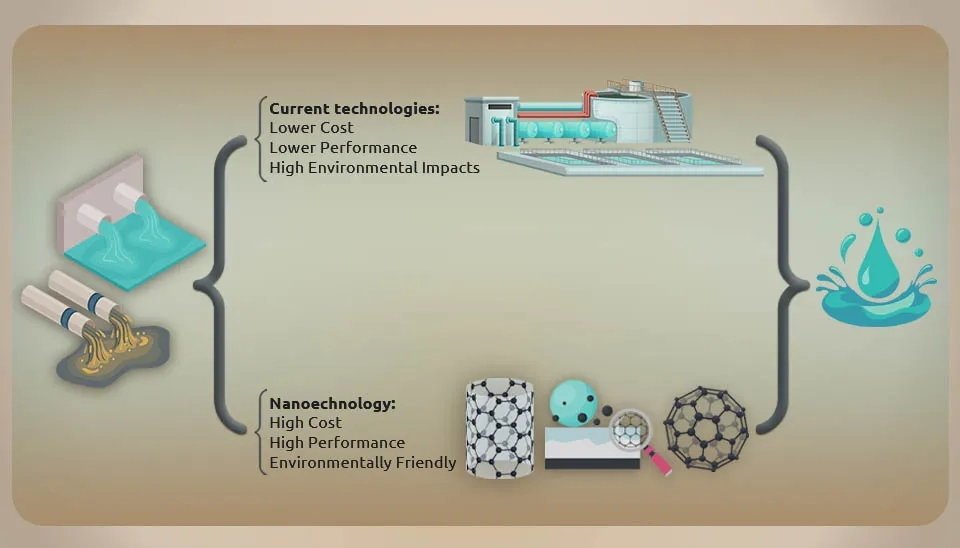
Table. 1. Contaminant Removal by Nanotechnology (Brief Table)
Nanotechnology in water and wastewater treatment | Contaminant Removal |
Carbon Nanotubes | Antibiotics Pharmaceuticals metal ions, such as lead, cadmium, mercury fluoride 1,2-dichlorobenzene polychlorinated hydrocarbons Ethylbenzene Zn2+, Pb2+, Cu2+, Cd2+ dyes |
Silver Nanoparticles | pathogens, such as viruses, bacteria, and fungi |
Titanium Dioxide Nanoparticles | organic pollutants Microorganisms dyes |
Zero-Valent Iron (ZVI) Nanoparticles | waterborne contaminants heavy metals arsenic chlorinated hydrocarbon fluids and perchlorates organic contaminants Cr(VI) Iron pathogenic bacteria copper zinc |
Nanofiber Membranes | Microbes and bacteria heavy metals micro-sized particles |
Magnetic Nanoparticles | arsenic removal iron, cobalt, and nickel |
Download Full Table of Advantages and Disadvantages of Nanotechnology
1. Carbon Nanotubes
Carbon NanoTubes (CNTs) are allotropes of carbon with a cylindrical nanostructure that is used to remove highly degradable contaminants, including antibiotics and pharmaceuticals (Ji et al., 2009; Das et al., 2014; Qu et al., 2013). Due to their high adsorption capacity, rapid kinetics, high mechanical strength, excellent chemical inertness, large surface area, high aspect ratios, and hydrophobic wall, carbon nanotubes can be used to trace metals and organic pollutants and can be used in the construction of composite membranes for water treatment applications (Das et al., 2014; Lee and Park, 2016). Depending on their manufacturing process, CNTs can be classified as single-walled nanotubes or multi-walled nanotubes. While carbon nanotubes are more expensive than conventional activated carbon, their sorption and desorption are more efficient. In addition to its high production costs (De Volder et al., 2013), due to the presence of metal catalysts, raw CNTs may contain some degree of toxicity, while chemically functionalized carbon nanotubes have not shown toxicity yet (Chen and Wang, 2006).
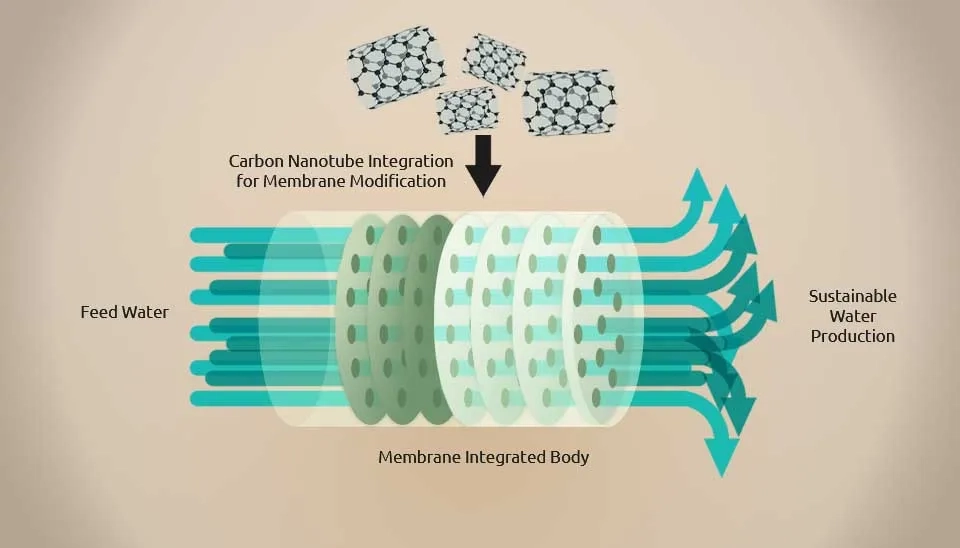
Carbon nanotubes are novel materials for adsorption of trace contaminants from water or air (Long and Yang, 2001; Lu et al., 2005). CNTs have better adsorption capacities than activated carbon (Yang and Xing, 2010), and can be used to efficiently remove metal ions, such as lead, cadmium, mercury, etc., from water (Lu et al. 2006; Sushma and Richa, 2015). Carbon nanotubes have also been utilized in combination with other nanomaterials to eliminate fluoride in water, with results showing higher fluoride removal efficiency of CNTs than activated carbon (Li et al., 2003). According to Peng et al. (2003), CNTs can be used in a wide pH range (3–10) and are perfect adsorbents for the removal of 1,2-dichlorobenzene from water. Generally, carbon nanotubes can demonstrate remarkable adsorption efficiency for different types of contaminants, namely polychlorinated hydrocarbons, ethylbenzene, Zn2+, Pb2+, Cu2+, Cd2+, and dyes (Peng et al., 2003; Lu et al., 2008; Cho et al., 2008; Li et al., 2003; Madrakian et al., 2011).
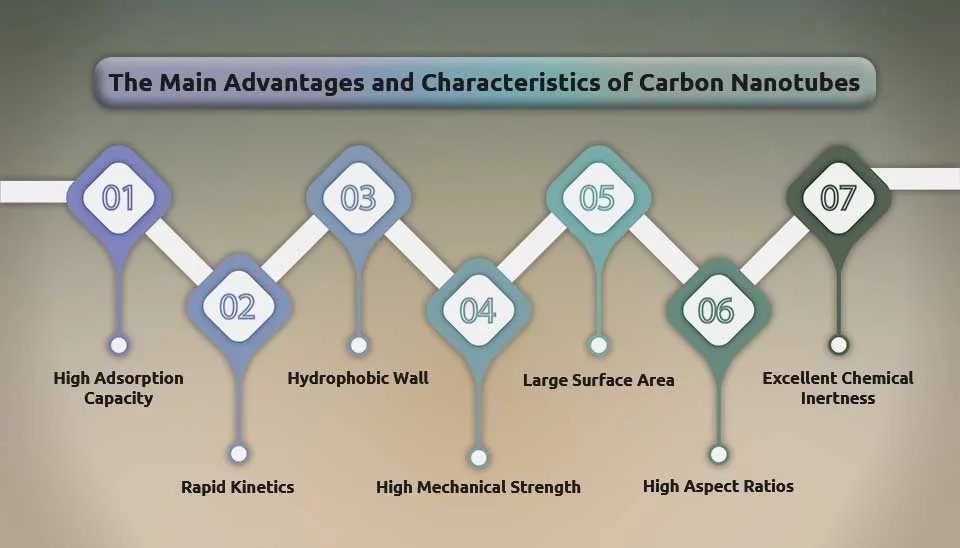
2. Silver Nanoparticles
Silver and its components are known for their antimicrobial abilities and are used in disinfection and water treatment applications. The antimicrobial activity of silver nanoparticles derives from their chemical affinity for sulfur and phosphorus. In the presence of ultraviolet light, silver nanoparticles show photocatalytic activity, and also in a zerovalent state, they display antimicrobial and antiviral activities. In recent years, silver nanoparticles have been used in water purification plants and different water and wastewater treatment applications and have shown promising results. Some devices and water filters (e.g., Aqua Pure and Marathon Systems) that are available in the market also use silver nanoparticles. Silver nanoparticles are also utilized in ceramic microfilters to disinfect pathogens (Dasgupta et al., 2020).
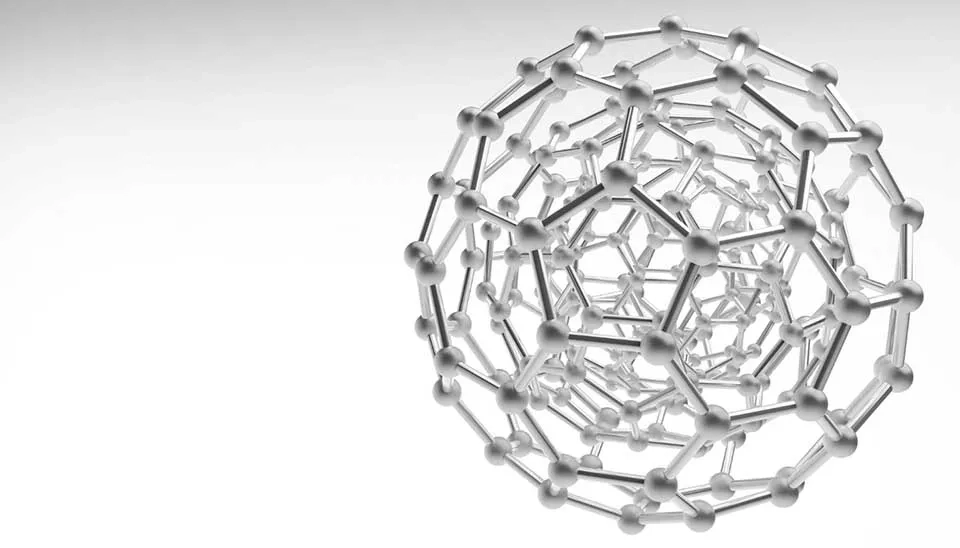
Nanosilver can be applied to point-of-use water disinfection systems and biofouling surfaces, with low negative effects on humans (Nowack et al., 2011). With nano silvers, it is possible to kill bacteria without requiring additional energy-consuming devices, making this nanoparticle a suitable disinfectant for remote areas (Quang et al., 2013). Nanosilver is one of the most widely studied metal-based nanoparticles and is known for its antibacterial effects against potentially harmful pathogens, such as viruses, bacteria, and fungi (Borrego et al., 2016; Kalhapure et al., 2015; Krishnaraj et al., 2012). A study conducted by Şimşek et al. (2018), compared conventional water purification (using Graphene Oxide (GO)) with nanomaterial-based treatment (using Ag nanoparticles). According to the study, while GO failed to remove ammonia, the AgNPs could achieve a 100% improvement in ammonia removal in the water. The results also showed that nano-based materials were very effective against the Salmonella typhi microorganism. The composition of GO and silver nanoparticles, instead of using GO alone ($27.86.), is also more cost-effective ($0.063.) and successful in water treatment performance.
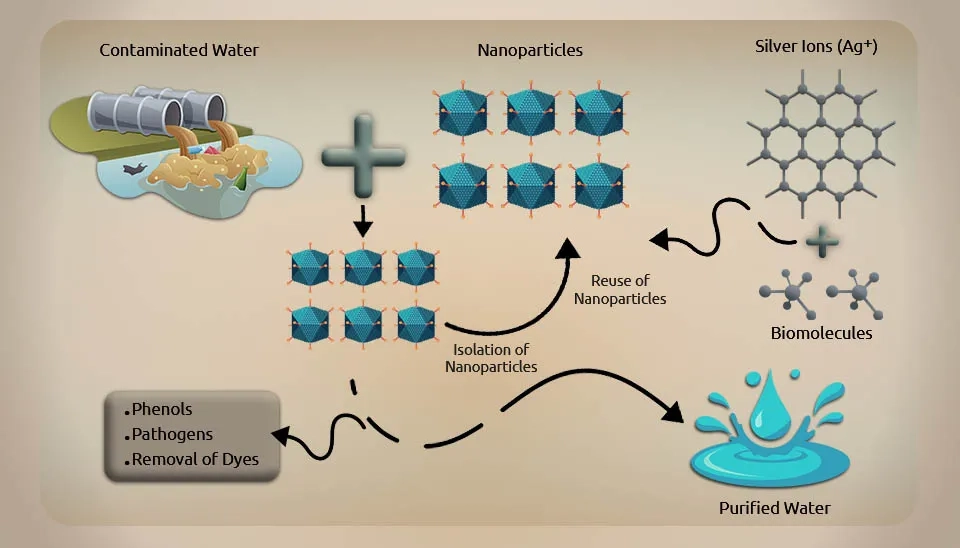
3. Titanium Dioxide Nanoparticles
Titania nanoparticles exhibit outstanding antimicrobial activity and are widely used in disinfection applications and decontamination processes. Titanium dioxide nanoparticles (TiO2) can be easily available at a low cost and have low toxicity and high chemical stability (Savage and Diallo, 2005; Kim et al., 2012; Liu et al., 2016). In the presence of UV or sunlight, they show excellent photocatalytic activity. TiO2 nanoparticles can be used as a membrane filter, suspension, or coating on the UV reactor surface. In addition, these nanoparticles are widely used for organic contamination degradation in water and wastewater treatment systems, and studies have shown their removal efficiency (Dasgupta et al., 2020). The main negative property of nano-TiO2 is that ultraviolet activation is required. The main advantage of nano-titanium dioxide over nanosilver is its endless lifetime as a catalyst. Therefore, it remains unchanged during the degradation of organic pollutants and microorganisms (Gehrke et al., 2015). Nano-TiO2 is a metal-based nanoparticle that can be used as a nanosensor to detect different types of organic and inorganic contaminants in water (Kanchi, 2014). TiO2 is also an efficient semiconductor photocatalyst to remove organic dyes from wastewater (Rafique et al., 2019). Zinc oxide (ZnO) nanoparticles are also nanomaterials for water purification due to their antimicrobial properties, strong photocatalytic activity, and ability to remove a wide range of organic pollutants.
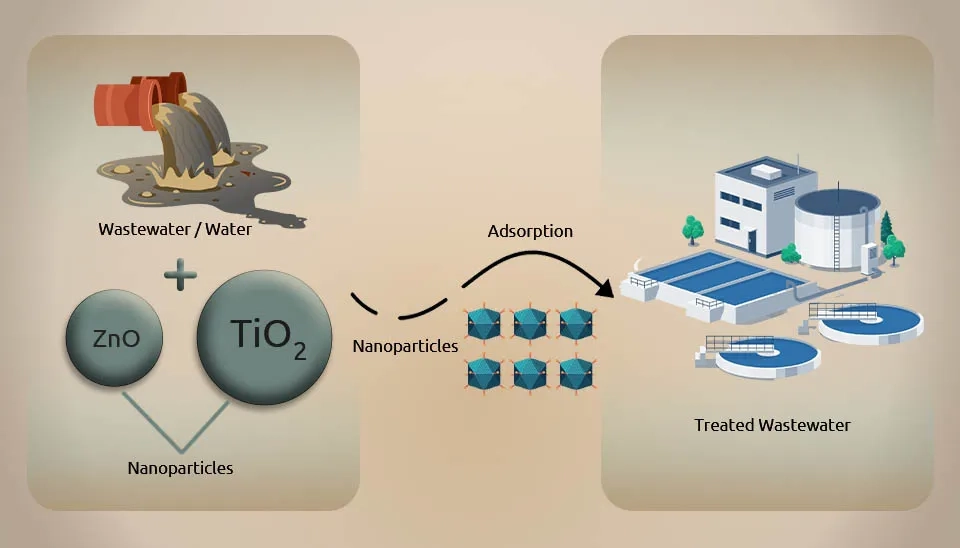
4. Zero-Valent Iron (ZVI) Nanoparticles
Zero-valent iron is an elemental metallic iron that works as a bulk-reducing agent to convert toxic and soluble oxidized materials in water into solid and immobile forms. Therefore, using zero-valent iron is an effective and reliable way to remove waterborne contaminants from the water. Due to their high reactivity, Zero-Valent Iron (ZVI) nanoparticles are known as the most commonly used nanoparticles for the removal of heavy metals (Mishra, 2014; Dasgupta et al., 2020). ZVI nanoparticles are much more reactive than conventional granular carbon since they have a high specific surface (Homhoul et al., 2011; Aredes et al., 2012; Matlochova et al., 2014). Nano-sized zero-valent iron can be synthesized easily, are cost-effective, and is eco-friendly, making them the most preferable (Phillips et al., 2010; Daniel et al. 2014; Stefaniuk et al., 2016; Adeleye et al., 2016; Li et al., 2017). The main disadvantage of ZVI nanoparticles is that before using them, stabilization is required (Gehrke et al., 2015).
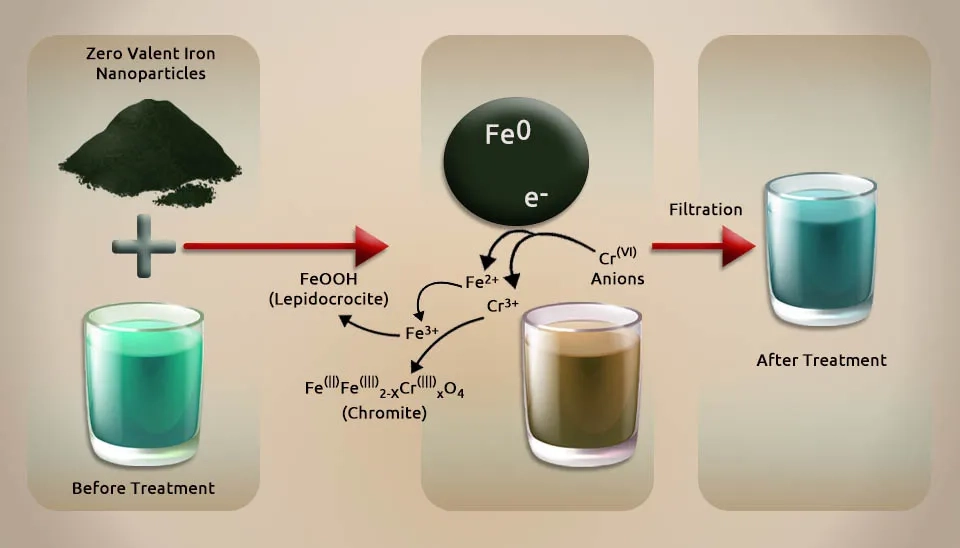
Due to its high arsenic adsorption capacity and large active surface, nano-zero valent iron is a promising nanomaterial for arsenic removal from drinking water (Zhu et al. 2009). Furthermore, ZVI nanoparticles have been used for the remediation of polluted groundwater, containing chlorinated hydrocarbon fluids and perchlorates (Markova et al., 2014; Plachtova, et al., 2018). This nanomaterial acts as an adsorbent for breaking down organic contaminants into non-toxic simple carbon compounds (Kharisov et al., 2012). In a study conducted by Zhang et al. (2020), Cr(VI) could be successfully eliminated by using ZVI nanoparticles. In another study, after adding nano-sized zero-valent iron, metals, and pathogenic bacteria were effectively and efficiently removed from a biological wastewater treatment plant (Kanel et al., 2006). Adeleye et al. (2015), worked on a 35000 L wastewater containing arsenic (520 mg/L), Cu (67 mg/L), Zn (10 mg/L), and other pollutants. In this study, 75 kg of nZVI was used for treatment. The results showed that by using this nanoparticle, the arsenic concentration in the final effluent was 0.05 mg/L, showing more than 99.9% efficiency. In addition, the concentrations of copper and zinc ions were less than 0.1 mg/L. Researchers compared the conventional treatment methods with nano-based approaches and found that nZVI was the only technique that reduced the targeted ions in the effluent to less than 0.5 mg/L (Li et al., 2014).
5. Nanofiber Membranes
The production of nanofiber membranes is one of the greatest achievements of researchers for potable water filtration. Nanofiber-based membranes have also demonstrated promising results in water treatment and electrospinning technology. The main characteristics of these membranes are high surface area (high surface-to-volume ratio), high porosity, low density, good mechanical strength, and complex pore structure (Barhate and Ramakrishna, 2007). Typical nanofibers are made of polymers, such as polyurethane, polyethylene oxide, and polylactic acid (Sharma and Sharma, 2012). The main disadvantages include pore blocking and the possibility of nanofiber release (Gehrke et al., 2015).
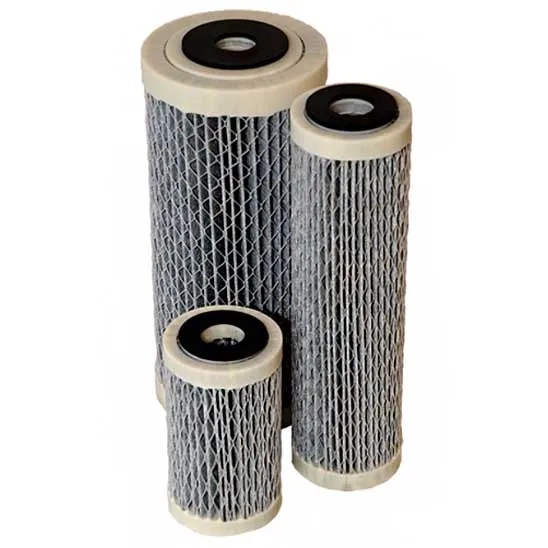
Nanofiber membranes one type of many Types of Membrane Fouling, can clean micro-sized particles from aqueous solutions and are highly resistant to fouling. In addition, organic functional groups, together with nanofibers, can contribute to the electrospinning process to synthesize affinity membranes for desalination and water treatment (Cloete et al. 2010). Compared to microfibers, nanofibers have a much higher surface-to-volume ratio, resulting in a better and more efficient separation and adsorption of microbes, bacteria, and heavy metals from the water. Nanofiber membranes’ eco-friendly nature, high-temperature resistance, high rejection rate, and longer life span make their usage more favorable (Prasad and Karchiyappan, 2019). It is proposed to use these membranes in the water pretreatment step for the removal of contaminants before ultrafiltration technology and reverse osmosis processes (Ramakrishna et al., 2006).
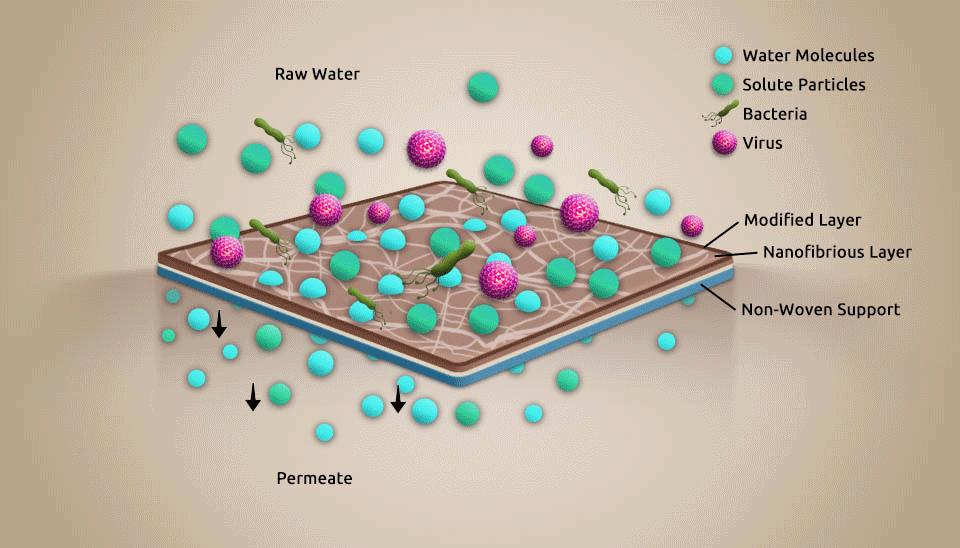
6. Magnetic Nanoparticles
Magnetic nanoparticles (magnetite Fe3O4) have been well-established in groundwater remediation for the separation of water contaminants, especially for arsenic removal (Gupta et al., 2010; Jadhav et al., 2015). Magnetic NPs can be injected directly into the polluted water, and particles can be easily eliminated through a magnetic field (Jung et al., 2004). Magnetic nanoparticles ordinarily constitute around 70 elements, including iron, cobalt, and nickel. By using an external magnetic field, these elements can be controlled, and according to their biocompatibility, synthesis mode, magnetic susceptibility, and characterization methods, they can be engaged for different purposes. Magnetic NPs are useful in both environmental changes and biomedical fields (Ramos-Tejada et al., 2015; de Souza et al., 2014). They are also known as versatile tools for water remediation and contaminant degradation (Huang and Keller, 2015). The main disadvantage of magnetic nanoparticles is that before using them, stabilization is required (Gehrke et al., 2015).
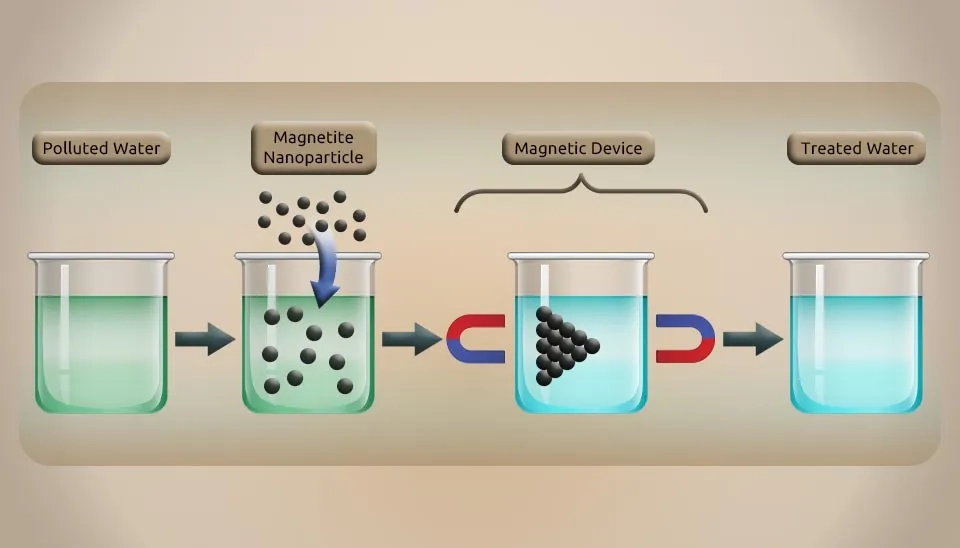
Conclusion
The development of nanotechnology in water and wastewater treatment is a promising approach to addressing the global problem of clean and safe drinking water production. In this article, some of the main nanotechnologies for water and wastewater treatment were introduced. Nanotechnology contributes to the rapid detection and removal of contaminants in water and primary wastewater treatment and has been widely applied for water purification in recent years due to its high efficiency, low cost, and durability. Nanotechnology-based water and industrial wastewater treatment approaches, such as nanomaterials, nano adsorbents, and nanomembranes can minimize the concentration of contaminants in water and help to overcome the main challenges faced by existing and conventional water and wastewater treatment technologies.
